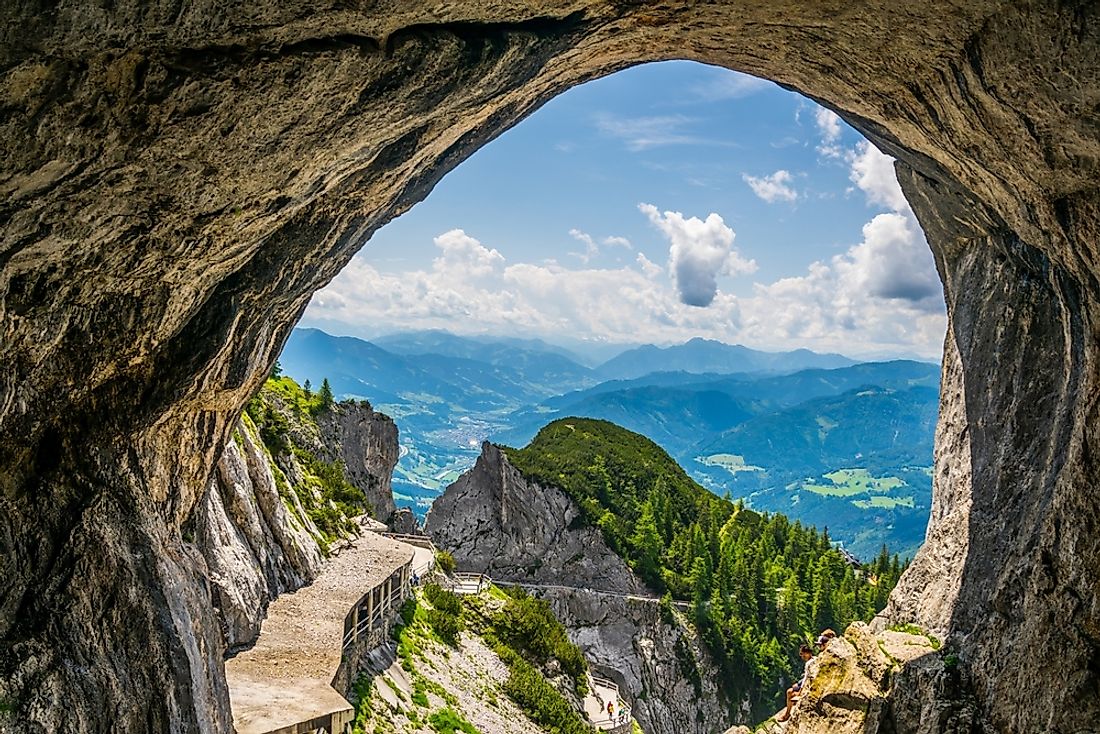Eisriesenwelt – The World's Largest Ice Cave

Eisriesenwelt is a natural ice and limestone cave that is situated in Werfen, Austria. Eisriesenwelt is located approximately 24.9 miles south of Salzburg, the fourth-biggest Austrian city. It is located inside the Mount Hochkogel in the Tennengebirge part of the Alps. The term Eisriesenwelt is the world’s largest ice cave and it extends for over 26 miles. The cave receives about 200,000 visitors annually.
Geology
The Tennen Mountains were created during the Wurm glaciations era of the Pleistocene. Tennen Mountain is the biggest Karst plateau of the Salzburger Alps. The ice cave is situated at the rim of the mountain’s karst plateau. Even though the ice cave has a length of about 26 miles, only the first 0.62 miles is covered by ice. The visitors are only allowed to visit the first 0.62 miles of the Eisriesenwelt. The other part of Eisriesenwelt is made up of limestone. River Salzach formed the ice cave when it eroded the passageway into the Tennen Mountains. The ice inside the cave was created by the thawing snow that drained into the Eisriesenwelt and froze. Since the cave’s entrance is open, the cold wind from inside the cave blows outside, thus preventing the ice from melting during summer. In winter, the chilly wind from outside blows into the Eisriesenwelt and freeze the snow inside.
History of Eisrienwelt
Eisriesenwelt was first officially discovered in 1879 by Anton Posselt. Before Anton’s discovery, Eisriesenwelt was known to the locals but they never explored it since they believed that it was the entrance to hell. Anton managed to publish the discovery in a mountaineering magazine in 1880; however, his findings were soon forgotten. Anton managed to explore the first 656.2 feet of the cave. Alexander Mork was one of the few individuals who remembered Anton’s discovery. Alexander Mork led numerous expeditions into the cave from 1912. Alexander was killed during the First World War, and an urn containing his ashes was placed inside the Eisrienwelt. The first route to the caves and explorer’s cabin known as the Forscherhutte were built in 1920. Another cabin was built and numerous paths to the mountain from Werfen were constructed later. Visitors started arriving at the cave soon after it became popular. A cable car, which reduces the 90-minute climb to 3 minutes, was installed on the mountain in 1955. Currently, Eisriesenwelt is owned by the National-Austrian-Forest Commission.
Tourism
Eisriesenwelt is open to the public from the beginning of May to October 26 annually. The cave’s temperature is below the freezing point; therefore, all visitors must wear warm clothes. Once visitors are inside the cave, they are directed to Posselt Hall. Posselt Hall is a vast room containing a stalagmite at the center that is known as Posselt Tower. After Posselt Tower, the tourists encounter an ashen-cross, which indicates the furthest point explored by Posselt. Some of the great natural features inside the cave include the Great-Ice Embankment which is 82 feet, the Hymir’s castle, Alexander Mork’s resting place, and an ice palace. The entire tour lasts for about 75 minutes.











